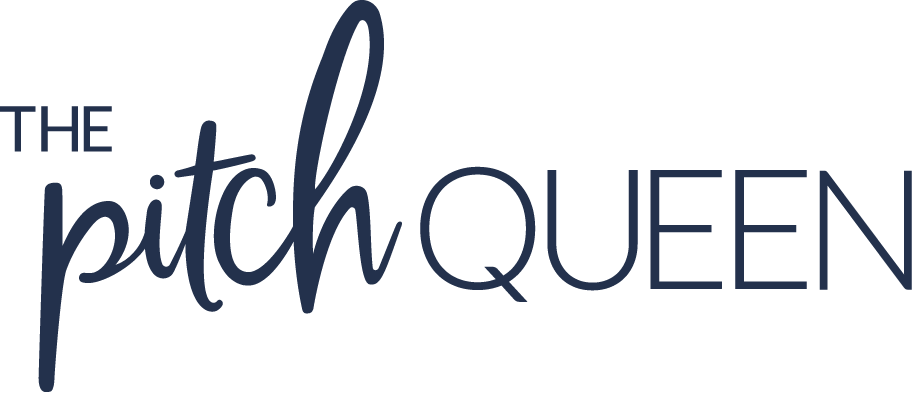
Have you ever been in a situation where you get on a sales call and don’t know where to draw the line before the potential client starts asking all kinds of questions, and before you know it, it’s turning into a free coaching call?
I bet you’ve been there before. What started out as a connection with the perfect fit for your program turns into a free coaching session that results in a “thank you” on the phone–but not a sale.
It’s easy to fall into that trap, especially when you are the expert on something and you really DO want to help people.
Sometimes knowing your stuff can do great things when it comes to delivering for your clients–but not so great things for your bottom line.
Here’s an example: I have a program I offer with a CPA friend. She’s an expert in business, which is great–but sometimes when she gets on the phone with somebody she’s a little too much of an expert for her own good. And by that I mean that she gives away a little bit too much information.
And at the end of a call, instead of saying “yes” to the sale, her prospect often says, “you know what, I think you’ve answered all my questions and helped me solve my problem so I don’t need your program after all. Thanks for your time!” (and click.)
She doesn’t know where to draw the line, and it ends up costing her the sale.
It’s great to offer free content to build an audience and kick up that “Know, Like, Trust” factor. In fact, that is a big part of building an audience. But sometimes when we give away too much information for free, (especially on a sales call) that person will never become a customer. In an attempt to do something with good intentions, you wind up hurting yourself in the process.
This is why sometimes when you’re the expert at what you do, you might accidentally hinder your potential sales.
Let’s go back to the example with my best friend. I know nothing about tax or CPAs so it’s different when I do the sales calls. It’s easier for me to get past the technical questions and get to the point of the sales call, which is to see if the prospect is a good fit or not.
I was on the phone the other day with someone who was interested in the program she was offering. He had ALL kinds of CPA questions for me. He asked questions about tax, what kind of programs we were going to learn, what are the laws, and on and on and on it went. With all these questions, my only answer was: “You know what? I don’t know.”
I was there not to answer any technical questions, but rather to see if he was going to be a good fit for the expert. That part was my job.
The EXPERT will teach you the rest of it.
Even if I knew something about tax or law, I would not be able to help this guy out. All I could do is say, “Well that’s a great question. When you meet Dominique in person she’ll be able to help you with that.”
All we’re doing is seeing if the client is gonna be a good fit for the program, NOT getting into a free session. This is where we draw the line.
So often people don’t know where to draw the line, and it’s the reason why you see a lot of people who are not selling their own programs.
If they get someone that knows nothing about the industry, that person is going to have a lot better conversion rates than the expert. It’s a lot less likely that someone who is selling a program on your behalf is going to give away too much information and end up letting their expertise get in the way of the sale.
But what if you really DO think that you’re being helpful when you give them a solid and value-packed sales call? It’s easy to think that if you provide all this fabulous information on the call the client is gonna want to sign up, right?
That’s not always the case, though.
I know how hard it is not to jump the gun and to start coaching someone on a sales call, especially when you listen to them describe their problem in detail. You’re probably thinking, “OMG, they really need help! I could help them right now!”
So is there a way to get a sales call going where you still get the client to see your value and manage to close the sale?
Honestly, the best way to help them in the end is to sell them one of your programs. That way, they get the full benefits of working with you and get their problem solved, right?
It might take some time to fully break yourself of wanting to jump on the “freebie train,” but being able to draw the line makes a BIG difference.
Here’s an example of how this looks. Your potential client shows up to the call. They tell you their problem, their dream, what having a solution once and for all would do for them. Then they start asking questions. Lots of questions.
Try this line on for size: “You know what? I’ve got the perfect program for that. This is the price, this is the length, and every single week we’re going to touch on each of those problems that you just told me.”
What does this do? It shows that you care and that you care enough to truly want to help them. Getting them into your program is the best way you can help them.
Not only that, but it shows that YOU value your time and your expertise. It shows you understand and OWN the value that you bring to the table. This shows your commitment. Your seriousness. And that you are the real deal.
It’s all about putting a value on your time. And the more you own your worth, the easier that is to do.
Give this a try sometime. You’ll find that not only does it help you remember what you are worth, but also it helps you weed out the clients who are less than committed. You’ll draw in the ones who are all-in and ready to take themselves and their success seriously.
Have you ever been at that point where you wonder where to draw the line? Give this trick a try and let me know how it works for you!










